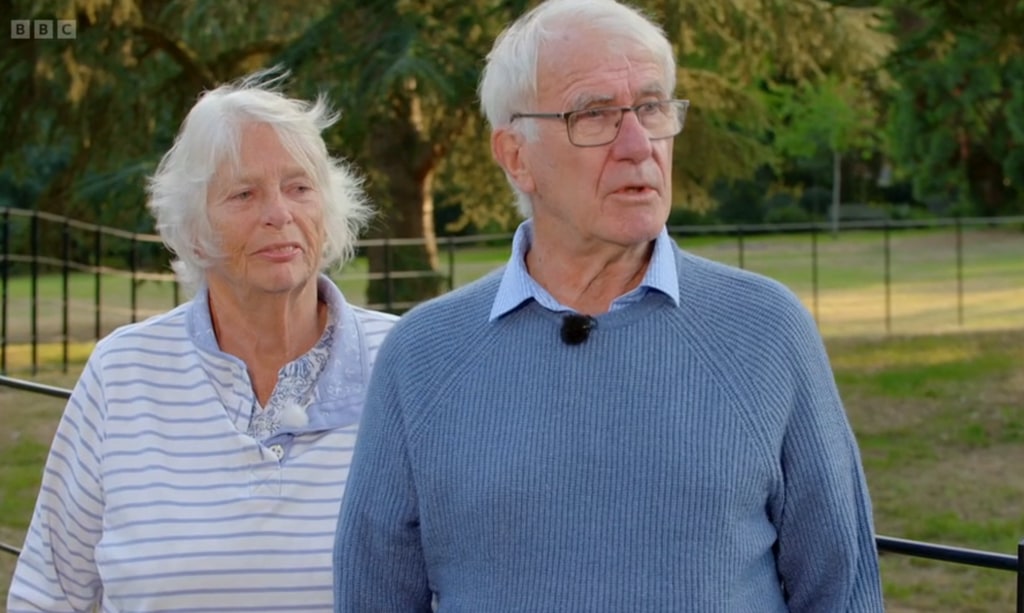Love Monster: Finding Your Happy Ending

Table of Contents
Identifying Your Inner "Love Monster"
Before we can find our happy ending, we must first understand the obstacles hindering our path. This involves identifying our inner "Love Monster"—those ingrained patterns and behaviors that sabotage our romantic lives.
Recognizing Unhealthy Relationship Patterns
Many of us fall into unhealthy relationship patterns without even realizing it. These patterns can stem from past experiences, insecurities, or learned behaviors. Recognizing these patterns is the first crucial step toward change. Common unhealthy patterns include:
- Fear of intimacy: A reluctance to fully open up and connect with a partner, often stemming from past hurts or a fear of vulnerability.
- Clinginess: Excessive neediness and dependence on a partner, leading to smothering and resentment.
- Jealousy: Excessive suspicion and possessiveness, often fueled by insecurity and fear of abandonment.
- Controlling behavior: Attempts to manipulate or control a partner's actions, thoughts, or feelings.
- Self-sabotage: Unconsciously undermining relationships through actions or behaviors that push partners away.
- Choosing unavailable partners: Consistently selecting partners who are emotionally unavailable or unwilling to commit.
- Repeating negative relationship cycles: Falling into the same dysfunctional patterns in multiple relationships.
These patterns often stem from deeper issues like past trauma, low self-esteem, or unresolved childhood experiences. Understanding the root causes is key to breaking free from these cycles. For example, someone who experienced neglect in childhood might develop an anxious attachment style, leading to clinginess in adult relationships.
Understanding Your Attachment Style
Attachment theory provides a valuable framework for understanding how our early childhood experiences shape our adult relationships. Your attachment style significantly influences your relationship dynamics. There are four main attachment styles:
- Secure: Individuals with a secure attachment style generally have healthy relationships characterized by trust, intimacy, and independence.
- Anxious-Preoccupied: This style is marked by a strong desire for closeness and a fear of abandonment, often leading to clinginess and insecurity in relationships.
- Dismissive-Avoidant: Individuals with this style tend to suppress their emotions and prioritize independence, often avoiding intimacy and commitment.
- Fearful-Avoidant: This style combines the anxieties of the anxious-preoccupied style with the avoidance of the dismissive-avoidant style, creating a complex dynamic of wanting intimacy but fearing closeness.
Understanding your attachment style can provide significant insights into your relationship patterns. Several online quizzes can help you determine your attachment style. [Link to a relevant quiz or resource here]. Learning more about attachment theory can empower you to address unhealthy patterns and build healthier relationships.
Strategies for Taming Your Love Monster
Once you've identified your inner "Love Monster," you can begin the process of taming it through conscious effort and self-improvement.
Self-Reflection and Self-Care
Self-reflection and self-care are crucial for building healthy relationships. This involves prioritizing your own well-being and addressing any underlying issues that might be impacting your relationships.
- Journaling: Regular journaling can help you process your emotions, identify unhealthy patterns, and gain self-awareness.
- Therapy: Working with a therapist can provide valuable support and guidance in addressing underlying issues and developing healthier relationship patterns.
- Mindfulness practices: Mindfulness techniques, such as meditation, can help you manage stress, improve self-awareness, and cultivate emotional regulation.
- Setting boundaries: Learning to set healthy boundaries is essential for protecting your emotional well-being and fostering respect in your relationships.
- Improving self-esteem: Building self-esteem can help you attract healthier relationships and avoid self-sabotaging behaviors.
- Focusing on personal growth: Continuously working on personal growth and self-improvement will enhance your overall well-being and make you a more attractive and fulfilling partner.
Healthy Communication and Conflict Resolution
Healthy communication is the cornerstone of any successful relationship. Learning to communicate effectively and resolve conflicts constructively is crucial for building lasting bonds.
- Active listening: Pay attention to your partner's words and emotions, showing genuine interest and understanding.
- Expressing needs clearly: Communicate your needs and desires assertively, but respectfully.
- Assertive communication: Express your thoughts and feelings directly and honestly without being aggressive or passive.
- Compromise: Be willing to compromise and find solutions that work for both partners.
- Seeking professional help: If you are struggling with communication or conflict resolution, consider seeking help from a relationship therapist.
Effective communication involves expressing your needs without blame or judgment. For instance, instead of saying "You always make me feel bad," try "I feel hurt when..."
Choosing the Right Partner
Choosing a compatible partner is paramount for long-term relationship success. This involves carefully assessing potential partners and prioritizing emotional compatibility.
- Identifying compatible values: Look for partners who share your core values and life goals.
- Recognizing red flags: Pay attention to warning signs of unhealthy behaviors or incompatibilities.
- Prioritizing emotional maturity and emotional intelligence: Seek partners who possess emotional maturity, self-awareness, and the ability to manage their emotions effectively.
Building a Lasting, Fulfilling Relationship
Once you've found a compatible partner, nurturing the relationship takes ongoing effort and commitment.
Cultivating Intimacy and Trust
Intimacy and trust are the cornerstones of any strong and lasting relationship.
- Vulnerability: Sharing your thoughts, feelings, and experiences openly and honestly.
- Open communication: Maintaining open and honest communication throughout the relationship.
- Shared experiences: Creating shared memories and experiences to strengthen your bond.
- Mutual respect: Treating each other with respect and valuing each other's opinions and feelings.
- Emotional support: Offering each other emotional support and understanding during challenging times.
Maintaining Relationship Health
Maintaining a healthy relationship requires ongoing effort and commitment.
- Date nights: Regular date nights can help maintain romance and intimacy.
- Quality time: Spending quality time together, engaging in activities you both enjoy.
- Shared hobbies: Sharing hobbies and interests can create common ground and strengthen your bond.
- Expressing appreciation: Regularly expressing gratitude and appreciation for your partner.
- Seeking professional couples counseling: Seeking professional help when facing challenges or conflicts can prevent issues from escalating.
Conclusion
Taming your inner Love Monster and finding your happy ending is a journey, not a destination. It requires self-awareness, self-care, and a commitment to building healthy relationships. By identifying unhealthy patterns, understanding your attachment style, and employing strategies for healthy communication and conflict resolution, you can pave the way for a fulfilling and lasting relationship. Remember, choosing the right partner and nurturing the relationship through intimacy and trust are key elements for success.
Ready to tame your inner Love Monster and find your happy ending? Start by taking a self-assessment quiz [link to quiz], exploring resources for improving communication [link to resources], or booking a session with a relationship therapist. Begin your journey towards healthier relationships and discover the love you deserve!

Featured Posts
-
 Wyoming House Bill Returns Otter Management To Game And Fish
May 22, 2025
Wyoming House Bill Returns Otter Management To Game And Fish
May 22, 2025 -
 Antiques Roadshow Couple Arrested After Jaw Dropping Appraisal Reveals National Treasure
May 22, 2025
Antiques Roadshow Couple Arrested After Jaw Dropping Appraisal Reveals National Treasure
May 22, 2025 -
 Cassis Blackcurrant Jam And Preserves Homemade Recipes And Tips
May 22, 2025
Cassis Blackcurrant Jam And Preserves Homemade Recipes And Tips
May 22, 2025 -
 Philadelphia Gas Prices Steady Rise Predicted
May 22, 2025
Philadelphia Gas Prices Steady Rise Predicted
May 22, 2025 -
 Blake Lively Accused Of Blackmailing Taylor Swift Details Of The Alleged Text Leak
May 22, 2025
Blake Lively Accused Of Blackmailing Taylor Swift Details Of The Alleged Text Leak
May 22, 2025
